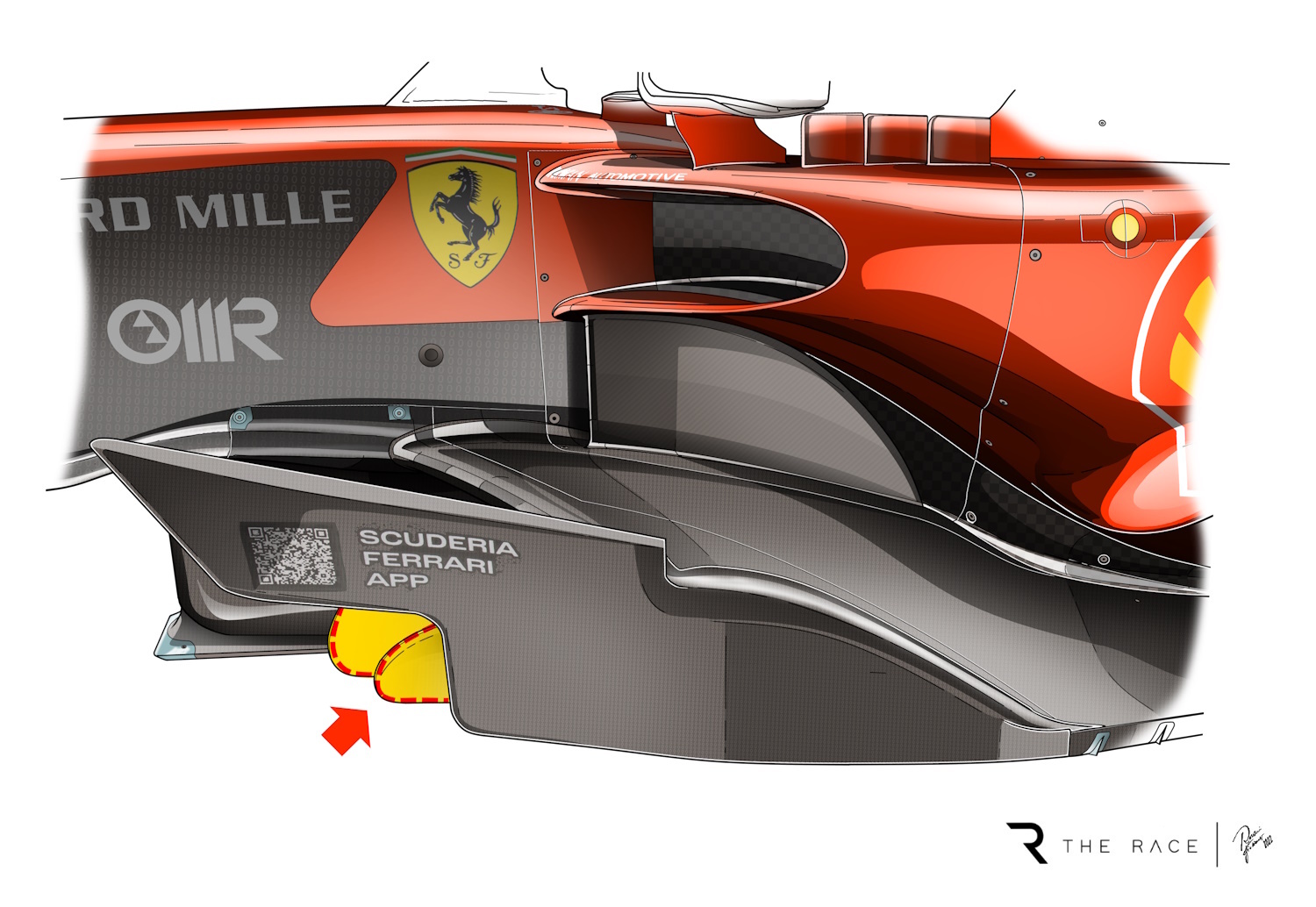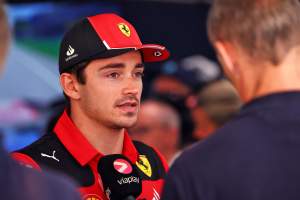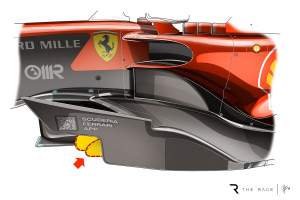Up Next

Upgrades, its best result of the Formula 1 season and talk of “the beginning of the turnaround” made the Austrian Grand Prix weekend a good one for Ferrari.
The question is whether, after its form at the Red Bull Ring which followed an encouraging Canadian GP weekend, the revival really is underway.
Charles Leclerc’s second place was only Ferrari’s second podium finish of the season (discounting sprints) and the margin of just 0.048 seconds to Verstappen in qualifying – even at a circuit where time gaps are narrow – is reason for encouragement. The battle for pole position in Friday’s qualifying session wasn’t decided until the final two corners, which is significant given Austria is a relatively orthodox circuit compared to Baku, scene of its sole pole position of 2023.
However, sometimes the on-paper results can be misleading. Fernando Alonso, whose Aston Martin team had a slight downswing at a track that exposed its weaknesses more than the previous one in Montreal where he finished second, suggested Ferrari’s performance was more about execution than pace.
“I’m not sure,” said Alonso when asked by The Race whether he was surprised by the gap to Ferrari that seemed to come out of nowhere.
“Ferrari was very fast in Bahrain, they were on the podium until Leclerc had a problem. In Jeddah, they qualified on the first row, had a 10-place penalty. From that point, more or less, they had incidents or problems in FP3s or qualifying or the red flag in Miami with Charles attempting the Q3 lap.
“They were very fast for the whole season, but it’s the first time that they’ve put the weekend together a little bit and they were one or two tenths faster than us. So I’m not too worried.”

So did Austria mark the start of the turnaround for Ferrari? Well, yes and no. As Carlos Sainz pointed out after finishing third in the sprint race at the Red Bull Ring, there’s still a long way to go, but at least it appears to be heading in the right direction rather than floundering.
“I do believe we are on the right track,” said Sainz. “Hopefully this starts to be the beginning of the turnaround but the end of the turnaround is still far away, you saw it today with how far ahead Max was. But I want to believe this is the beginning of the turnaround.”
Sainz’s comment encapsulates the reality of Ferrari’s situation. It’s making progress, but needs to do a lot more if it’s to re-emerge as a serious threat to Red Bull. What happened at the Red Bull Ring both demonstrated the improvement and further exposed the weaknesses that remain to be tackled.
If Ferrari really is on the right track, it turned onto that path when it conceived the upgrade package that appeared at the Spanish Grand Prix last month.
The focal points of those changes were the floor and the engine cover/sidepods. Ferrari added nothing in Canada, but brought a new front wing and floor to Austria. This package appeared a race or two earlier than originally planned thanks to Ferrari pushing hard to accelerate the introduction of new parts.
The frenetic nature of the sprint weekend meant Ferrari had little time to evaluate the upgrade, with just a single 60-minute free practice session before the set-up was locked in for qualifying. But senior Ferrari engineer Jock Clear characterised the Austria package as a similar step in performance to the one introduced in Spain.
“We didn’t have any time to conclude anything on Friday because of the sprint format, so it’s been fit-and-forget basically,” said Clear on Sunday. “From the numbers, it’s going in the right direction.
“It’s another incremental step, probably a similar step to the last one, but it’s very much designed not just to bring more downforce [while] shedding more drag, it’s been designed to make the car a bit more benign and predictable.
“That’s difficult to get from the windtunnel. We’ve put it on strongly believing the tunnel numbers can be relied upon and the performance certainly suggests it brought some performance. We’re back to a situation where we are frustrated not to be on pole.”
Clear’s point about making the car more benign is a significant one. Both Leclerc and Sainz have complained about the car’s capricious nature and its unpredictability during the season. As early as the second event of 2023 in Saudi Arabia, Sainz complained that the Ferrari SF-23 was also particularly badly affected by running in dirty air.
The Race’s resident ex-F1 technical director, Gary Anderson, pointed to two obvious areas where this attempt to make the aerodynamics “more robust” manifested itself in the Ferrari upgrade – the switch from two to one vortex generators on the outer floor fence and an internal underfloor leading edge splitter that is now more radiused.

These are just two eye-catching changes supporting Clear’s claim that Ferrari is not only working on increasing downforce but also improving the car’s characteristics. Clear characterised the car as less peaky, which means it is possible to evolve the set-up approach further.
Its progress in understanding the car was helped not only by a promotional day of 100km of running at Fiorano ahead of the Austrian Grand Prix, but also by its participation in the two-day Pirelli tyre test in Barcelona after the Spanish Grand Prix.
It’s important to note that despite claims of Ferrari abusing that test, it adhered to the same regulations that all the teams face in tyre tests, meaning it was working to Pirelli’s run plan and wasn’t allowed to work through a set-up programme. But this did give it the benefit of two days of running at what Clear calls “an exceptionally good track to tell you what your car is doing”.
This has helped to accelerate the progress with understanding the set-up parameters of the car, and therefore contributed to the car performing well both in Canada and Austria.
“We’ve had two upgrades that require us to set the car up slightly differently because their sweet spots are in a slightly different place,” said Clear. “I wouldn’t say we’ve taken a different direction philosophically, we’ve just followed what these upgrades have asked of us.
“From the set-up point of view, we have gradually improved our understanding of where this car wants to be. So some of those improvements would have come anyway [from] better understanding. The upgrades are specific to some areas – some ride heights specific to some speed corners – but the whole set-up is front suspension, rear suspension, damping. We’ve just got a better understanding of how this car wants to operate.

“Perhaps we were a bit on the back foot simply because the underlying package was so peaky. When you have a peaky car aerodynamically, the set-up becomes very difficult to home in on. You end up flitting from one direction to the other. As soon as you make that less peaky car you start to create a fuller understanding of where it wants to run.”
Despite that increased knowledge and a strong run to second place, Charles Leclerc felt the car was still far from perfect. But he was encouraged by the improved behaviour of the car.
“Overall, we had a more consistent car today, which was good to see,” he said after the grand prix. “With these sprint weekends, it’s a bit more unpredictable, you have less preparation and maybe I was a bit out of the window in terms of set-up for this race.
“I had the rear stepping out a bit too much and struggling with the rear degradation. But on the second and last stint it was a little bit better as I modified my driving. But maybe we left a little bit more performance out there.”
It’s difficult to get a definitive read on the degradation for Ferrari compared to Red Bull as they ran differing strategies but it seems reasonable to conclude it was far better than what happened in Spain. The Ferrari does still suffer from more deg than the Red Bull but in Austria it seemed a more gentle effect. How much of the difference to Spain is specific to the track and conditions is unclear but Silverstone will also be a good test.
It will also be the ideal place to evaluate Ferrari’s performance in the high-speed corners given it was not without reason that the main difference between Verstappen and Leclerc in qualifying was in the quick Turn 9/10 double at the Red Bull Ring.
“It is a very different track in Silverstone and it’s going to be very interesting to see where we are there because I feel like maybe the weakness of the car now is still a little bit, the high-speed corners,” said Leclerc. “And in Silverstone, there is lots of high-speed [corners]. So, it will be good to see if this new package helps.”
Inevitably, the performance on track on any given weekend is down to a confluence of factors and Alonso had a point when he suggested Ferrari’s execution of the weekend was better in Austria. However, the fact that Ferrari was hardly flawless – losing time with Sainz’s VSC pitstop and having a difficult day with Leclerc in the mixed conditions of the sprint – doesn’t entirely support that. The point about Ferrari so far this season is that when it has been quick over a lap, that has often not translated to the race. It did at the Red Bull Ring even if the deg was still not a strength.

What Sainz said is perhaps the most pertinent. This might be the start of the turnaround, the initial crank of a handle that’s going to need to be worked hard over the months and perhaps even years that follow if it’s to become a credible challenger to Red Bull.
The best-case scenario is that Austria marks the start of ongoing improvement for Ferrari in terms of performance and consistency and it seems fair to conclude that it was closer to that than a track-specific upswing.
What is clear is that it’s got a lot of work to do if it’s to hold its own in the three-team battle for second with Mercedes and Aston Martin.










